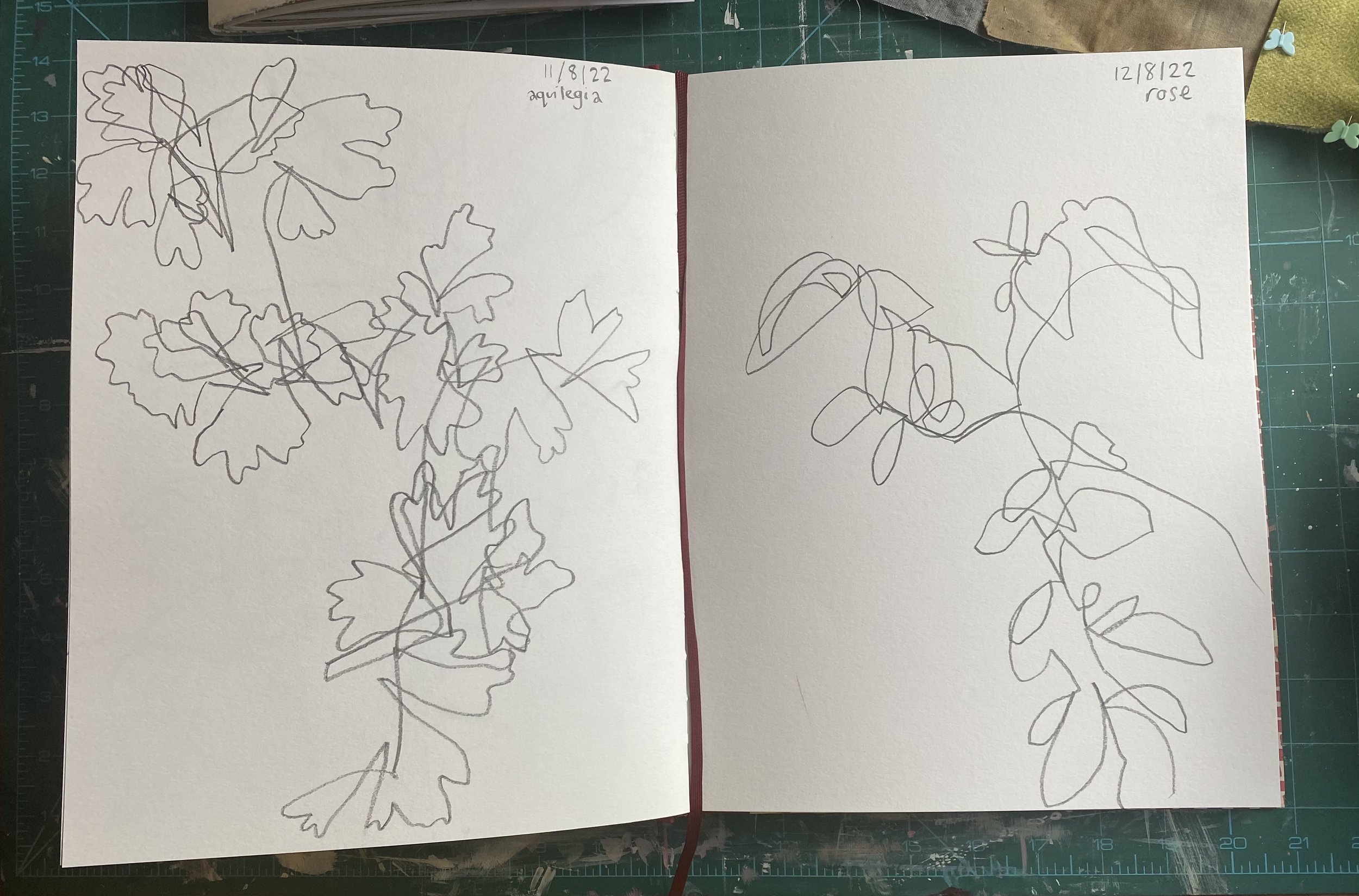How I use sketchbooks
I used to feel like sketchbooks had to be beautiful pieces of art in their own right and, for some people, they are. However, approaching sketchbooks in this way feels so full of pressure to me that I get completely overwhelmed and don’t even start. For me, sketchbooks are works in progress; they are a place to record information. I tend to work in a few different sketchbooks simultaneously, using each book for a different purpose.
I have two sketchbooks on the go for my drawings; one for my daily blind contour drawings and another for drawing in when I go on nature walks or visit gardens. Currently, I am using a Fabriano Venezia 9x12 inches drawing book for my daily drawing, which I am enjoying. The paper is sturdy so, if I ever want to go back and work into any of my drawings using watercolours or collage, I know the paper will be strong enough to cope with it.
Daily drawings in Fabriano sketchbook
I have made my own sketchbook, out of the offcuts of paper from other projects, to take with me on trips out. I have taken it to RHS Wisley garden to draw plants in the rose garden there as well as using it in the garden here at home. It is a nice compact size so fits into my bag easily and, being bound paper offcuts, it is fairly lightweight too.
Sketchbook made from offcuts of paper
Another way in which I use my own handmade sketchbooks is to compile ideas books. I like to isolate the ideas from my research that I would like to develop further and compile them all into one book to give me a clear path forward. In my most recent book I have pages about dyeing, both with procion dyes and natural dyes as well as pages about ecoprinting, solar dyeing and rust dyeing. I have included samples of dyed fabric and threads and included some of my blind contour drawings. There are also pages to record artwork that I have made over the summer and samples of my stitching, as well as text to explain my inspiration and ideas.
Pages from my most recent ideas book
I also use a sketchbook for keeping a record of other artist’s work that I admire. I analyse each piece of work to pinpoint exactly what it is about it that I like and then make notes to remind myself. It could be a particular technique or process they have used to make the piece, or the colours or composition that they have chosen. It is useful to make notes about it and to decide whether it is something that would work in my own art or how I could utilize it in my own way. It is not about copying other artist’s work, but rather noticing the things that appeal to me and taking inspiration from them.
Pages from my inspiration sketchbook
The other sketchbook that I use consistently is a workbook. At the moment I am using an A5 moleskine journal with one lined and one unlined page per spread for this purpose. I use it to jot down or sketch out ideas as well as for making lists and storing small cloth samples for colour matching. I also take this book with me when I visit exhibitions to make notes in it about things that resonate with me about the work on show or, often, the accompanying written information. I also make notes about anything that I would like to find out about in more detail at a later date.
In addition to the sketchbooks that I use to record information about the many aspects of my process, I also have quite a few notebooks on the go. I use these to keep me on track with getting things done;
· I have another A5 moleskine that I use as a daily planner, listing the tasks for each day. I find it best to plan one day at a time, listing out the tasks for the following day each evening.
· I use a journal to assess my progress and work through any problems that arise.
· I have a diary and a notebook to make notes and keep track of writing for the blog and posting on time. For this, I plan a month in advance with leeway if I want to add in a new post or change posts around. Nothing is set in stone at the start.
· Finally, I have a general notebook for all my scribbles and notes that don’t have anywhere else to go!
I like to keep all my ideas organized so that I know where to look for them. Although I use different books to keep them in, they are not separate but overlap with each other constantly. They are different parts of my process that come together to form the whole story.



